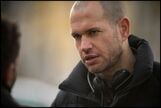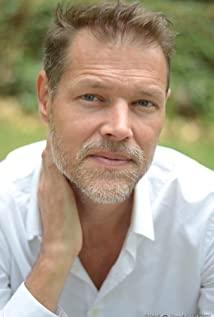Regarding the content of "Synonyms", as well as the motivation and thoughts of the performance, the director has made it very clear in the interview. Here is a reflection on the form of the film, focusing on the "materiality" caused by the film.
Deleuze has an interesting point about power, saying that "you only paint power" in the process of painting. In painting, if "force" is prompted, it will inevitably lead to the materiality of painting being prompted, such as Manet and Cezanne did. The materiality prompts the audience to pay attention to the medium itself. For example, Manet's impasto method imitates the mechanism of the canvas (Foucault's point of view), and Cézanne is even more startling to leave blank in the oil painting (exposing the base cloth), through painting The creation of the situation changes the perception of the original homogeneous canvas in different areas, and the homogeneous base fabric is therefore heterogeneous. The picture has changed from "what you see" to "what you feel". Cezanne rebelled against the demands of the "imitation theory" and created new objects while highlighting the medium itself. So painting changed from the original state of "imitation" to "creation", and painting broke free from the magic barrier of Plato's "imitation theory". So Manet and Cezanne inspired and created modernism.
And "Synonyms" is also manipulating the "force" in the image, so that various "forces" are dislocated in the whole image. For example, the force of overriding the camera (mirror flip) and the force of the actor's performance (protagonist behavior and language) are overstrengthened. Therefore, the expressive speed of the image and the "imitation" power of the image (through fracture) are weakened.
Like the tautology of synonyms, the excessive movement of the image directly brings the experience of "excessive signifier" to the audience. On the surface, the signifier does not seem to reach the signified completely, it goes against the economic (efficiency) demands of the signifying system. The excess of signifiers directly leads to the "flow" of information without producing "value-added" information.
In Freud's "Principle of Super-Pleasure Pleasure", he rationally understood this phenomenon as the "circumvention" of libido, for example, in asexual behavior, sexual behavior releases libidinal, but because the measures do not reach The purpose of reproduction, it produces pure "pleasure," and this pure pleasure movement, in Freud's view, still conforms to the reproductive appeal, but this appeal is prolonged and returns in a "circumferential" form. As the director of "Synonyms" himself explained, he likens the restlessness of the camera to the state of the protagonist. This excessive movement reflects the protagonist's eagerness to penetrate into French culture. French society at the same time responds with a steady still shot. The stills wrestled with each other, and ended with the victory of the still shots, and the restless shots were snuffed out. That is to say, in the director's intention, the "signifier suspension" returns in a "circumferential" way in the whole.
However, in the audience's intuitive perception, the director's intention does not seem to be obvious, and the redundant "force" (more or less) "fluctuates" for the audience. It has become the "pure pleasure" of pure consumption, embodied in the restless value of the break of the signifier. However, this pure consumption comes at a price. In Freud's concept of "death impulse", "pure pleasure" is at the cost of the destruction of the whole (in the film, it is reflected in the destruction of the overall immersion of the film). For film, the pure consumption of signifier suspension brings about the materiality of the image as a whole being brought out. The materiality of the image is prompted by the excessive consumption of the signifier, and the feeling is prompted as the mutual struggle of two logical forces, the differentiated fusion between the two movement strategies of "movie object" and "photographed object". generate tension.
In Director Rapid's view, the tension of contrast will directly lead to "poetry". Poetry is the differentiated reset of common things (for example, poetry is the recombination of common words), and the juxtaposition of differences will bring about strangeness. At the same time, dissimilarity strikes the boundaries of rationality, and a poetic situation is thus established. Not only does the director follow this principle in the manipulation of shots, but even in editing, he declares war with the conventional functional ideographic system to create unexpected spans (fractures - also the "poetic logic" suggested by Tarkovsky). Contrary to the appeal of imitation by creating tension through contrast, images also tend to become "neutral (without moral issues)", "direct (direct signifier)", "superficial (direct signifier)" present)". The image avoids entering ideographic logic through direct presentation, thereby avoiding the moral charge of shot selection. In all presentations, the content may be fictitious, but the real presence of the manipulator's editing and scheduling reflects the authenticity of the image. The image has been manipulated to reach "Being Here".
"...I want these ideas to come out with a certain sense of realism. The editing and the mise-en-scene are where the authenticity of the film lies." It means you are not in touch with that moment." - Nadav Rapid
As a result, the image as a whole becomes "perceivable", rather than simply "visible" in the representational sense, and the image "exists materially" due to its heterogeneous presentation. It is precisely because of the physical presence of the image that the film is viewed as an independent material object outside the audience. This is a universal relation of existence: the audience exists because of the image, and the image exists because of the audience. At the same time, this relationship of existence is reversible. It cancels the subjectivity tendency of images in traditional images (images desire to get the subjectivity of the audience by simulating conscious experience), and also cancels the one-way nature of traditional images. The Law of Attraction (in traditional video, the audience's consciousness flows to the film's context). Now, the viewer and the image each exist in a reversible "relationship/association" with each other. The concept of opposition between subject and object is cancelled.
The image is no longer a pure imitation of reality, just like Cézanne's painting, it contradicts the appeal to imitation, reorganizes and juxtaposes imitations, and becomes a new object outside imitation (the world). While creating a new self, images also shape a new viewing experience.
View more about Synonyms reviews











